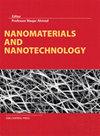掺入碳纳米管的Sn–3.0Ag–0.5Cu焊点的电阻率
IF 3.3
3区 材料科学
Q2 MATERIALS SCIENCE, MULTIDISCIPLINARY
引用次数: 10
摘要
本研究的主要目的是研究掺入碳纳米管代替焊料块的Sn–3.0Ag–0.5Cu焊点的电学性能。采用机械混合方法制备了碳纳米管掺入量高达0.04wt%的Sn–3.0Ag–0.5Cu焊膏。然后在260°C的峰值温度下,通过回流焊将制造的焊膏焊接在印刷电路板上。采用四点探针法在室温下测量了Sn–3.0Ag–0.5Cu纳米管焊点的电阻率。用光学显微镜和场发射扫描电子显微镜对其微观结构进行了观察。Sn–3.0Ag–0.5Cu焊点的电阻率随着碳纳米管的加入而增加,最高可达0.03wt%,在0.04wt%时略有下降。在焊料基体中掺入碳纳米管明显改变了Sn–Ag–Cu焊料合金的微观结构。微观结构观察发现,由于碳纳米管的存在,电阻率与焊料基体中共晶相的分布面积有关。结果表明,共晶相面积随着碳纳米管重量百分比的增加而增加,直到0.03,然后在加入0.04重量百分比的碳纳米管时略有减少,这与电阻率值的趋势平行。本文章由计算机程序翻译,如有差异,请以英文原文为准。
Electrical resistivity of Sn–3.0Ag–0.5Cu solder joint with the incorporation of carbon nanotubes
The main objective of this study is to investigate the electrical properties of Sn–3.0Ag–0.5Cu solder joint with the incorporation of carbon nanotube instead of solder bulk. Sn–3.0Ag–0.5Cu solder paste with the incorporation of carbon nanotube up to 0.04 wt% was fabricated by using mechanical mixing method. Fabricated solder pastes were then soldered on printed circuit board via reflow soldering at 260°C peak temperature. Electrical resistivity of Sn–3.0Ag–0.5Cu-carbon nanotube solder joints was measured by the four-point probe method at room temperature. Microstructure properties were observed by optical microscope and field emission scanning electron microscope. Electrical resistivity of Sn–3.0Ag–0.5Cu solder joint was found to increase with the incorporation carbon nanotube up to 0.03 wt% and slightly decrease at 0.04 wt%. Incorporation of carbon nanotube in the solder matrix apparently changes the microstructure of Sn–Ag–Cu solder alloys. Microstructural observation found that electrical resistivity correlated with the distribution area of eutectic phase in the solder matrix due to the existence of carbon nanotube. It was revealed that eutectic phase area increases with the increasing of carbon nanotube wt% up to 0.03 and then slightly decreases at the incorporation of 0.04 wt% carbon nanotube as parallel with the trend of electrical resistivity values.
求助全文
通过发布文献求助,成功后即可免费获取论文全文。
去求助
来源期刊

Nanomaterials and Nanotechnology
NANOSCIENCE & NANOTECHNOLOGY-MATERIALS SCIENCE, MULTIDISCIPLINARY
CiteScore
7.20
自引率
21.60%
发文量
13
审稿时长
15 weeks
期刊介绍:
Nanomaterials and Nanotechnology is a JCR ranked, peer-reviewed open access journal addressed to a cross-disciplinary readership including scientists, researchers and professionals in both academia and industry with an interest in nanoscience and nanotechnology. The scope comprises (but is not limited to) the fundamental aspects and applications of nanoscience and nanotechnology
 求助内容:
求助内容: 应助结果提醒方式:
应助结果提醒方式:


